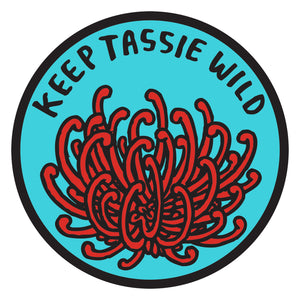That geographical vagueness might give the impression that The Central Plateau is some sort of grab-bag of highland areas that weren’t spectacular enough to be given a “proper” name, like Cradle Mountain or The Walls of Jerusalem. How wrong that impression would be! The Plateau is an area of subtle drama, quiet beauty – and thousands (and thousands!) of lakes.
Tasmania’s Central Plateau is a strangely ill-defined region. It’s roughly bounded by Great Lake to the east, the Great Western Tiers to the north, and the Walls of Jerusalem to the west. Its southern boundary is even more vague, but perhaps the Lyell Highway marks a convenient edge. In altitude, virtually all of the Plateau is above 1,000m.
It owes it foundational identity to dolerite, and to a massive sub-surface upwelling of that igneous rock during the Jurassic period, around 170 million years ago. Almost equally its identity has since been shaped by the ice sheets that covered the surface during a number of glacial phases. That covering was more ‘doona’ than ‘sheet’, as it measured hundreds of metres thick in some parts. Imagine that huge amount of ice, at least 6,000 sq km in area, slowly jostling and crunching its way across the plateau! In the process it scraped a phenomenal number of hollows, depressions, grooves and gouges out of the mostly doleritic bedrock.
While many of those grooves are now water-filled, the resulting landscape is still stark today. Heavy frosts, snow, strong winds and shallow soils favour straggly grey-green eucalypt forest or low-growing alpine heath. Huge brilliant green cushionplants, prickly bright-flowering scoparia, and spongy sphagnum moss are the champions at ground level. The most notable vertical exception is Tasmania’s own pencil pine. Clusters of these beautiful, slow-growing conifers typically encircle many of the lakes.
I have often heard the Central Plateau called “the land of a thousand lakes”, and have always thought this to be a gross understatement. To try and show otherwise, I once tried to count the number of lakes on a map. I chose Ada, the old Tasmap 1:25 000 map. That scale of map covers an area 20km by 10km. Using a magnifying glass and a pen and paper, I diligently tried recording each lake.
It was such an eye-watering job that I gave up after counting 350 lakes in one typical strip (10km long by 1km wide). Given there were 19 such strips still to count, I estimated between 5 000 and 7 000 lakes on the Ada map sheet alone. At least 8 more lake-dotted 1:25 000 maps cover the rest of the Central Plateau area. I’ll leave it to someone more patient than me to do the maths on that. I would rather be out there weaving my way around these watery treasures, knowing that I could wander here for a lifetime and still have no chance of seeing all of the lakes on our marvellous Central Plateau.
Enjoyed this article and want to learn more about Lutruwita/Tasmania?
You might like Peter Grant's Field Guides - Dolerite.
Peter Grant is a nature writer and blogger, who as well as studying Earth Science, Theology and Education, spent 24 years working with Tasmania Parks & Wildlife Service. He lives with his wife in the foothills of Kunanyi/Mt Wellington.
Landscape photos: Peter Grant






